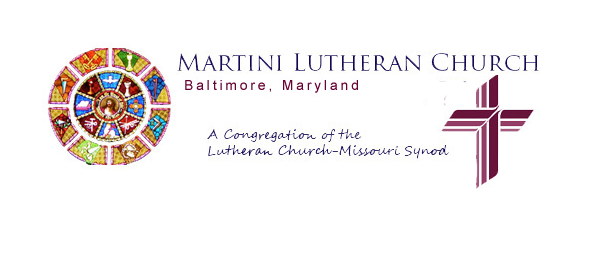Pastor Friedrich C. D. Wyneken, famed Lutheran missionary of the Lutheran Church Missouri Synod, served Old St. Paul as its second pastor in 1840-1845. His job was to cleanse, strengthen, and rouse the old church into new zeal by ridding the congregation of those members who were Reformed, Unionist, or Methodist so that the church was truly Lutheran. St. Paul’s congregation thrived under Wyneken. He had the idea to set up district schools in the areas of the city which drew large numbers of members to the congregation, so that the younger children could walk to school in their own neighborhood. He said the church members needed to help those families which couldn’t afford the 12 and a half cents weekly tuition for the school. A laborer in the 1860s earned $9 a week. The men in the congregation should pay a dollar a year to be remitted to the school as a part of their church dues. The women were asked to speak with church officers to tell how much they could pay to help with the school so all members could enroll their children. Pastor Wyneken also said there needed to be more teachers and a principal in the main school. 1856 minutes from the school committee of the church council called for a school to be located in the Southern School District. By 1860, the central school of Old St. Paul’s was closed. There was a school in the eastern part of the city on Bethel and Orleans Street, a school in the west on Freemont and Waesch Streets, and a school on Leadenhall Street in South Baltimore. The language spoken in the schools was German. The Civil War was about to begin.
In 1865, the Sewing Circled of Second German Evangelical Lutheran Church, St. Paul, incorporated. Translated minutes stated that on Jan. 1, 1866, the 62 ladies of the Sewing Circle met in the school building at the regular time. In the constitution they adopted, the prime objectives were “furtherance of our church and school, our seminaries and missions, and to support indigent students”. They paid the $45.00 a year cost for the school, and helped find clothes for poor students. Their minutes also stated that members of Second Lutheran St. Paul were considering building a new church under the name of Martini and forming their own congregation in south Baltimore near the school. The Sewing Circle later changed its name to The Martini’s Ladies Society. By February 1868, in a call document sent to Rev. Carl Frincke, the church leaders trying to convince him to be Martini’s first Pastor bragged that their school had 108 children and two teachers. Wow what a ratio of kids to teachers! Earlier minutes from Old St. Paul’s said the school would be closed at 2PM. in case of inclement weather, after the first session. Different sessions would make it easier on the teachers to handle such a large amount of students.
The school was on Leadenhall Street between Henrietta and Hamburg Streets. It fronted Leadenhall Street for 28 feet (the normal south Baltimore row-home is 14 feet wide) and ran back 155 feet to Peach Alley (much longer than a regular home in the area). There are no known pictures of the school house in our files, and the block of Leadenhall Street where it once stood is gone, replaced by Sharp-Leadenhall Court. In 1870, Martini church built a two story addition on back of its house of worship for a cost of $4,534. The first school house on Leadenhall Street was sold to a Franz Mayd for a sum of $1,050. All benches and furnishings from the school house were tobe used in the new building.
If any reader has a picture or some information about Martinis school on Leadenhall Street please contact me Sandy Harper [email protected]. Thank you.




